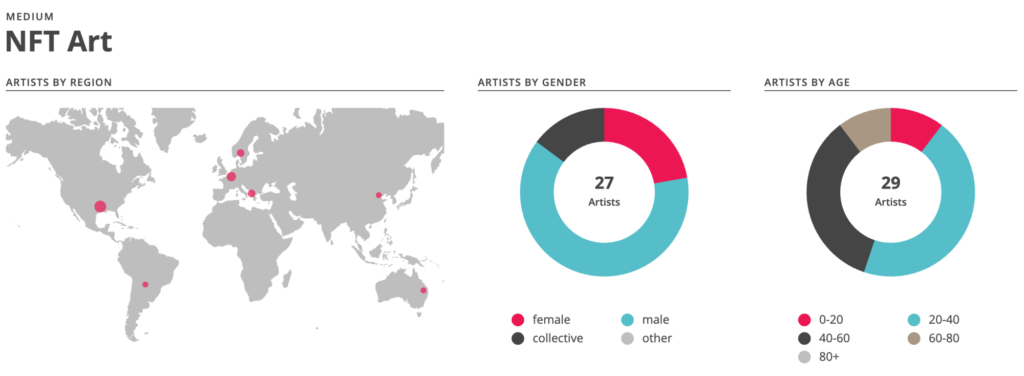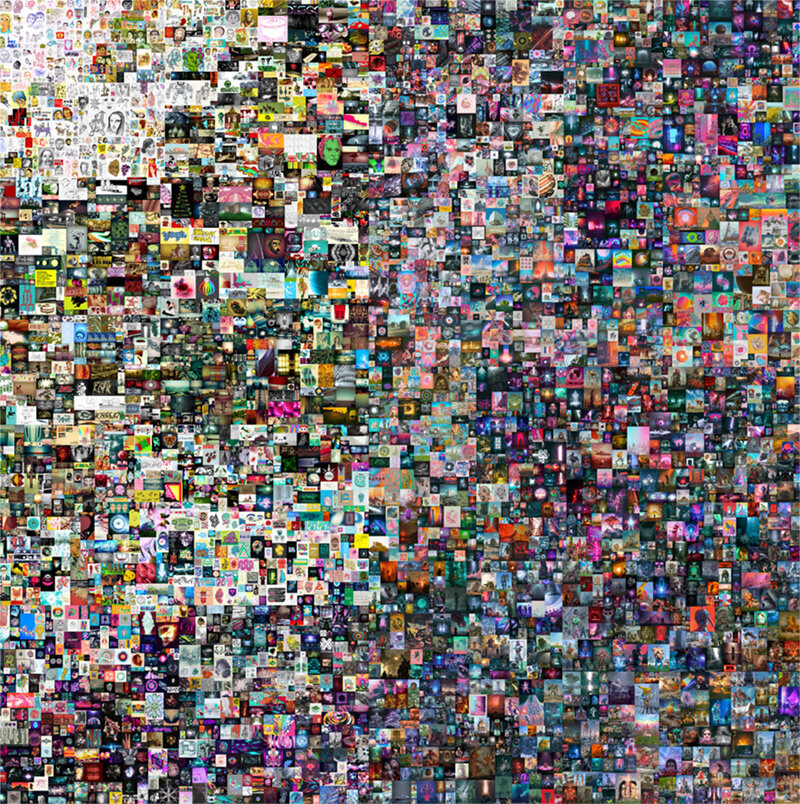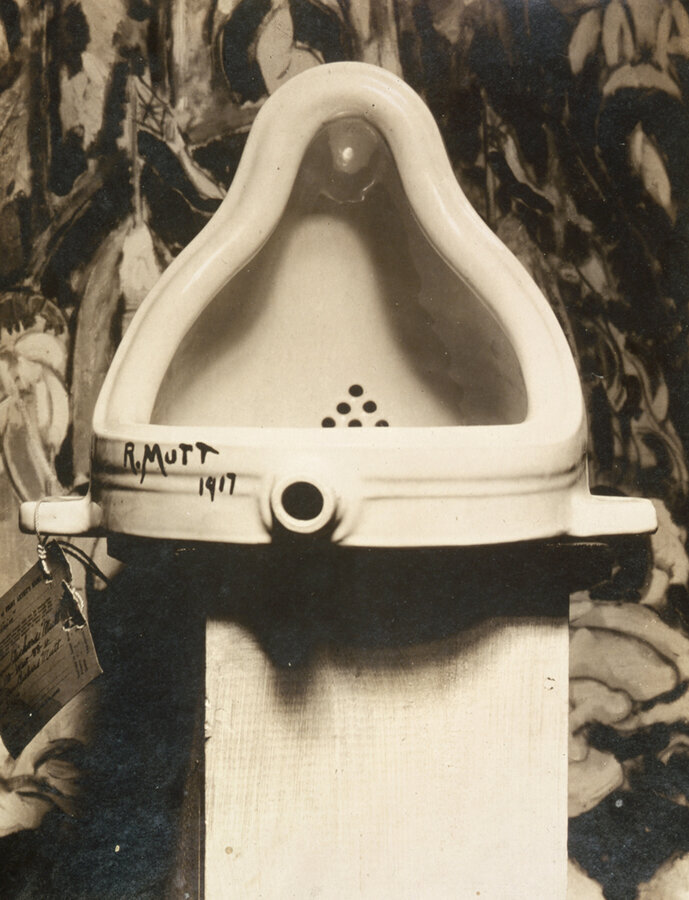
What the heck does it all mean?
By now your ears are probably positively vibrating with the constant news of NFTs. Today we’re diving in, may we apologise if this brings on a headache.
For those not yet familiar with the term NFT:
An NFT or non-fungible token, is an asset verified using blockchain technology. Basically, it is a way of transforming digital artworks and other collectible items into original verifiable assets.

Even if an artwork is the same and sold in editions, no two NFTs are the same. NFTs have been around for a few years already, but when the focus was CryptoKitties- little cartoon cats connected to the blockchain, it didn’t really warrant the Art world’s attention.

Recently however, much more significant artwork has been made into NFTs and the prices of NFTs have skyrocketed, which resulted in an over $69 million sale in collaboration with MakersPlace, at the auction house Christies, of a JPeg from the artist Beeple. Yes, a JPEG… But a JPEG with 5000 digital images included, made over the last 13 years.
Why the “Tulip Mania”?:
The explosion is not so unusual. We’ve all spent a lot of time at home over the last year and NFTs appeal to our inherent desire to collect. Although an artwork that is turned into an NFT is still available for viewing to an infinite degree on the internet, having the original is tantalizing. This, alongside FOMO, a wider notoriety and a greater understanding of Cryptocurrency has really driven the craze.
But how can their worth be quantified?
The issue with NFTs is that there isn’t anything currently that they can be compared to, to establish a fair value. Which is one of the reasons there are certainly issues with the dramatic prices.
In the (physical) art world we can easily compare the number of an artist’s exhibitions, the institutions they exhibit with, the number of countries they show in, and peers they show with, to other artists. Here, as NFTs are so new, the same rules that apply to art don’t yet apply to NFTs.
This is not to say however, that there aren’t incredibly talented and skilled artists with long careers, that are now producing NFTs. The difference is, a lot of them worked in another sector and although revered in their creative division were previously unknown to the art world. Now, alongside digital creatives finding a wider audience, known artists, musicians and celebrities have begun to create their own NFTs, their recognised careers then helping with either a sense of verification or at the very least, infamy.
The NFT market has established a number of online galleries of sorts, although anyone can upload their own NFT artwork, there are hyped featured drops of well known artists. In this way there is clearly a selection committee at work contributing to quality control.
How does this compare to other historical movements?
In many ways, the introduction of NFT artworks is not so dissimilar to a number of artistic movements of the past, trailblazers paving the way towards acceptance and acclaim whilst creating opportunity for smaller artists to gain exposure and capitalize on their creativity.
The only difference is that now it is for something that can’t really be held in your hands or easily hung on a wall and is tied up with a bunch of 1’s and 0’s.
Take the infamous Société des Artistes Indépendants, formed in Paris in 1884, where artists collaborated to form an association to organise exhibitions “without jury nor reward”, thereby circumventing the usual extremely selective process to be exhibited.
Through the years that followed, the likes of Seurat, Signac, Cezanne, Gauguin, Van Gogh, Delauney, Léger, and Duchamp amongst many others, carved out careers, though much of their work was considered scandalous at the time, it shaped the future of art. This beginning process is not unlike the freedom afforded to artists adding NFTs online.

Marcel Duchamp, was a founding member of the american division of this group, but his now infamous readymade, “Fountain” was submitted under a pseudonym and was not shown at the groups 1917 opening exhibition, although all submitted artwork was to be accepted and exhibited.
Even amongst forward thinking peers, the art was not accepted, though it is now considered a major landmark in 20th century art and is a perfect example of challenging the notion of what art is.
It makes us ponder the same question on NFTs. Are they art? The digital artworks most certainly are, but once they are turned into an NFT, what do they become?
The environment:
Making the digital artwork is not the issue, but blockchain technology which is behind the verification or “minting” of NFTs as well as cryptocurrencies, releases staggering amounts of greenhouse gas emissions.
Each NFT created produces an alarming 200kg of carbon into the atmosphere. That’s HUGE. As of yesterday, the top Cryptoart platforms have produced a whopping 133,820,255 kgs of CO2. The concern is that as the popularity grows for NFTs, so will the number of NFTs created increase exponentially.
Even though, just as in the art world, a vast number of artworks will never amount to much monetary worth, that’s not to say they do not have other significance, but in the art world the creation ends with a canvas and some paints being used and here the creation of an NFT will equate to a massive increased environmental cost.
Although promises have been made by some artists to offset the carbon emissions, it’s not enough. A new approach needs to be taken that is not so alarmingly energy-inefficient.
Will NFT art be considered art, or will it remain as a collectible form of currency?
NFT’s have now made the jump from specialised websites, to main auction houses. Both Sothebys and Christies have begun selling them, a marker of their worth and spread to mainstream accessibility.
But it’s time that is needed to answer that. Like any new creative movement, time is the real decider. NFTs haven’t arrived yet fully in the art world, but that doesn’t mean they won’t. The $69 million sale of Beeple’s, Everydays: The First 5000 Days, lands his work, next to that of Hockney’s and Koons’ in the top three most expensive artworks ever sold by living artists.
So whether NFTs stay, become cultural heritage and find their way to Museums or not, they are now undeniably a piece of history.
Let’s make history happen.
The Artfacts Team
